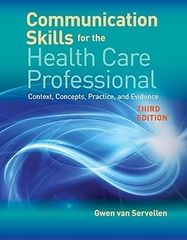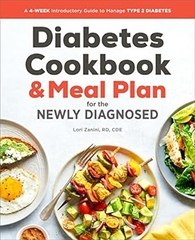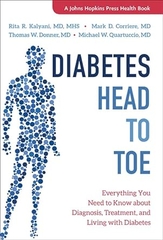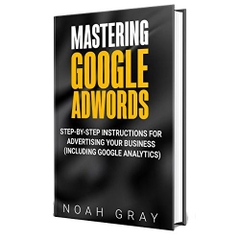-
-
-
Tổng tiền thanh toán:
-
-
Thông tin
-
Tìm sách theo yêu cầu
Running has become more and more popular in recent years, with thousands of people entering marathons, buying new running shoes with the latest technology, and going for a daily jog, whether on the track or on a treadmill. Unfortunately, with running comes injuries, as a result of wrong information and improper training. Author Jay Dicharry was tired of getting the same treatments from doctors that didn’t heal his joint and muscle pain from running, so he decided to combine different fields of clinical care, biomechanical analysis, and coaching to help you avoid common injuries and become the best runner you can be.
Along with clear and thorough explanations of how running influences the body, and how the body influences your running, this book answers many of the common questions that athletes have: Do runners need to stretch? What is the best way to run? What causes injuries? Which shoes are best for running? Is running barefoot beneficial?
The mobility and stability tests will assess your form, and the corrective exercises, along with step-by-step photos, will improve your core and overall performance, so that you can train and run with confidence, knowing how to avoid injuries!
Product Details
- Paperback: 320 pages
- Publisher: Skyhorse Publishing; 1 edition (August 1, 2012)
- Language: English
- ISBN-10: 1620871599
- ISBN-13: 978-1620871591
- Product Dimensions: 8.9 x 5.9 x 0.7 inches
- Shipping Weight: 1.3 pounds (View shipping rates and policies)
- Average Customer Review: 4.8 out of 5 stars See all reviews (94 customer reviews)
- Amazon Best Sellers Rank: #6,910 in Books (See Top 100 in Books)
Editorial Reviews
Review
“The biggest challenge running coaches encounter is discovering the balance between maximizing workload while holding off injuries. Jay Dicharry presents years of knowledge and useful practical information in a format that's understandable. I am certain Anatomy for Runners is spot on because Jay has helped several of my athletes both remain healthy as well as get back to championship form.” (Jason Vigilante)
“This is the best resource on running biomechanics and injury prevention. The corrective exercises have become part of my training routine, improved my performance, and reduced my injuries.” (Alan Webb, American record holder in the mile)
“Running is a simple sport, right? But why does almost everyone get hurt? As Jay discovers in this valuable guide, the reason is an amazingly complex mix of anatomy, strength, forces, vectors, and footwear effects. Alas, after reading this book and feeling what running really is, you will rediscover and understand its simplicity . . . then you can throw the rest of the library away.” (Dr. Mark Cucuzzella)
“This is the best resource on running biomechanics and injury prevention. The corrective exercises have become part of my training routine, improved my performance, and reduced my injuries.” (Alan Webb, American record holder in the mile)
“Running is a simple sport, right? But why does almost everyone get hurt? As Jay discovers in this valuable guide, the reason is an amazingly complex mix of anatomy, strength, forces, vectors, and footwear effects. Alas, after reading this book and feeling what running really is, you will rediscover and understand its simplicity . . . then you can throw the rest of the library away.” (Dr. Mark Cucuzzella)
About the Author
Jay Dicharry , MPT, SCS, is the Director of the SPEED Clinic and the Motion Analysis Lab at the University of Virginia. Originally from New Orleans, Jay received his Masters of Physical Therapy degree at Louisiana State University Medical Center. He is an instructor in the Sports Medicine program and Physical Medicine and Rehabilitation Residency at the University of Virginia. Jay is a Board Certified Sports Clinical Specialist, and a certified coach through both the United States Track and Field Association and the United States Cycling Federation. He is widely published in numerous professional journals on running gait and biomechanics, lectures nationally to clinicians and coaches on care of endurance athletes, conducts research on runners, and consults to individual, USA Track and Field and the US Air Force on athlete development. Jay has a competitive history in swimming, triathlon, cycling, and running events on both the local and national level, and has coached athletes from local standouts to national medalists. His passion is combining his personal, clinical, and research focus to help athletes achieve their full potential.
- Link: http://www.amazon.com/Anatomy-Runners-Unlocking-Potential-Prevention/dp/1620871599
Most Helpful Customer Reviews
67 of 69 people found the following review helpfulBy osugrad85 on January 6, 2013
Format: Paperback Verified Purchase
6 Comments Was this review helpful to you? YesNoI am 50 years old and have been a lifetime runner who has suffered a variety of running injuries (plantar faciitis, shin splints, posterior tibial tendonitis, piriformis syndrome, IT band syndrome, and most recently a stress fracture of the distal head of my left fibula, just to name a few). This book does a great job of explaining the mechanics of the human body in layman's terms and how to apply that knowledge to improving running gait and efficiency. And, the book as self assessment tests that help you determine deficiencies in your own body mechanics (core stability, flexibility, strength, etc.), and provides a slew of exercises to improve your identified deficiencies.
This is one of two places where the book could be improved. At the end of the self assessment tests there is a chart that lists exercises (by name) to perform to correct the deficiencies, and the next chapter contains those exercises listed first by number, then by name. Why the author did not include the exercise "numbers" in the chart at the end of the self assessment tests is beyond me. I felt like I was having to solve a puzzle in flipping through the exercise chapter looking for each of the exercises recommended for me. I ended up creating a cheat sheet for me that listed the exercises recommended for me by name, then matching them up with the numbers (and page numbers) of the exercises in the following chapter. Had the author included the exercise numbers in the table it would have made the book much easier to use.
The other criticism I have of the book is that the book does not contain an index in the back. How can you write a book like this and not include an index?
Update: I've dropped my rating from 4 to 3 stars. The reason? Frustration! Every time I turn to this book to use the exercises "prescribed" for me in the self-assessment section, I get frustrated for the reasons I've already discussed above (no index and no matrix connecting the exercises by name to their location in the book). But, I've also found that several of the exercise names used in the table at the end of the self-assessment section do not match the names used in the exercise section, leaving finding the proper exercise up to the reader's interpretation. For example, I think, where the self-assessment section identifies exercises "T-Ball Rock and Roll", "Lateral Hip Bridge", and "Rotational Lunge", the actual exercise names in the exercise section are "T-Ball Triad", "Side Lying Hip Bridge", and "Twisting Lunge." Add to that the fact that the self-assessment section names the following exercises that do not appear at all in the exercise section: Squat Training and Swiss Ball Triad (which I do not think is the same thing as "T-Ball Triad"). And, there are several exercises in the exercise section that are not mentioned at all in the self-assessment table. Something definitely went amiss during editing.
Good book to read, but very frustrating book to actually use which is the whole reason for purchasing it. Ugh!
This is one of two places where the book could be improved. At the end of the self assessment tests there is a chart that lists exercises (by name) to perform to correct the deficiencies, and the next chapter contains those exercises listed first by number, then by name. Why the author did not include the exercise "numbers" in the chart at the end of the self assessment tests is beyond me. I felt like I was having to solve a puzzle in flipping through the exercise chapter looking for each of the exercises recommended for me. I ended up creating a cheat sheet for me that listed the exercises recommended for me by name, then matching them up with the numbers (and page numbers) of the exercises in the following chapter. Had the author included the exercise numbers in the table it would have made the book much easier to use.
The other criticism I have of the book is that the book does not contain an index in the back. How can you write a book like this and not include an index?
Update: I've dropped my rating from 4 to 3 stars. The reason? Frustration! Every time I turn to this book to use the exercises "prescribed" for me in the self-assessment section, I get frustrated for the reasons I've already discussed above (no index and no matrix connecting the exercises by name to their location in the book). But, I've also found that several of the exercise names used in the table at the end of the self-assessment section do not match the names used in the exercise section, leaving finding the proper exercise up to the reader's interpretation. For example, I think, where the self-assessment section identifies exercises "T-Ball Rock and Roll", "Lateral Hip Bridge", and "Rotational Lunge", the actual exercise names in the exercise section are "T-Ball Triad", "Side Lying Hip Bridge", and "Twisting Lunge." Add to that the fact that the self-assessment section names the following exercises that do not appear at all in the exercise section: Squat Training and Swiss Ball Triad (which I do not think is the same thing as "T-Ball Triad"). And, there are several exercises in the exercise section that are not mentioned at all in the self-assessment table. Something definitely went amiss during editing.
Good book to read, but very frustrating book to actually use which is the whole reason for purchasing it. Ugh!
Format: Paperback Verified Purchase
Packed with information on why injuries happen and how to prevent them. Not just the basics, but in depth explanations on why your muscles, ligaments, and tendons act the way they do. I had been struggling with chronic hamstring strain for a long time. This book was my ticket to recovery.
XEM CHI TIẾT TẠI AMAZON.COM
- Thông tin chi tiết
- Mục lục
- Đánh giá & bình luận của người mua
- Những cuốn sách cùng chủ đề hoặc có liên quan
Tại web chỉ có một phần nhỏ các đầu sách đang có nên nếu cần tìm sách gì các bạn có thể liên hệ trực tiếp với Thư viện qua Mail, Zalo, Fanpage nhé
Đăng ký nhận tin qua email
Hãy đăng ký ngay hôm nay để nhận được những tin tức cập nhật mới nhất về sản phẩm và các chương trình giảm giá, khuyến mại của chúng tôi.












